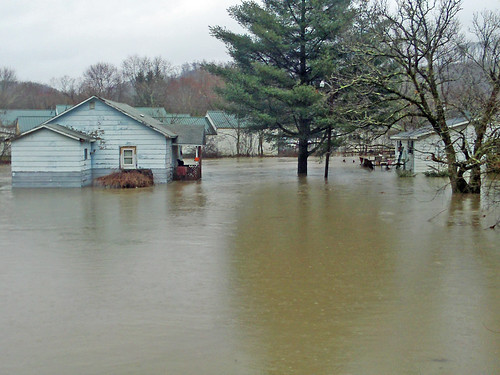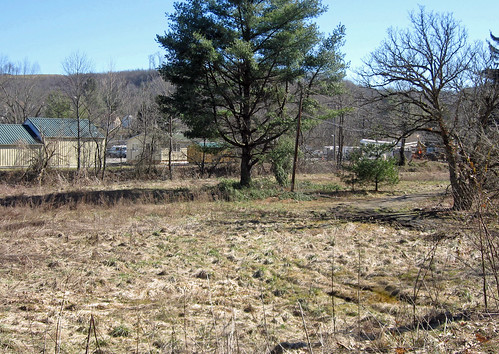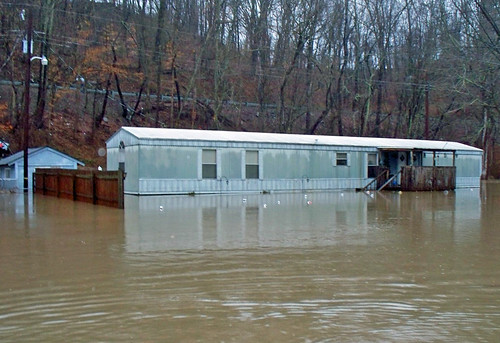For more than 45 years, people who lived in West Virginia’s Dunloup Creek Watershed have dealt with floods. That’s because there’s a scarcity of flat land in the area and residents have had to settle mostly along the creek—the very area that floods during storms.
Two major floods in 2001 and 2004 devastated five low-income communities spread out across two counties in the watershed. The floods destroyed houses, ate away at the stream bank, polluted drinking water and washed away utilities. Damages totaled millions of dollars.
Because of the mountainous terrain and far-flung population, traditional flood control measures like dams, channels, floodwalls, dredging and flood proofing were not feasible. Yet many residents were trapped into living in their damaged homes, unable to move out because of perilous financial circumstances.


In 2007, local residents, county and state officials, and the Dunloup Creek Watershed Association worked with USDA’s Natural Resources Conservation Service to come up with a plan that would solve the problem. The result was the Dunloup Creek Watershed Voluntary Floodplain Buyout Project, which offered residents in the area an opportunity to move to safer areas.
Project funding came from the Recovery Act of 2009 and was administered through NRCS’ Emergency Watershed Protection Program, which implements measures to protect communities in natural disaster-prone areas from further damage to life and property.
“NRCS has made a dramatic and positive effect on the lives of many individuals by getting them out of harm’s way,” says District Conservationist Gary Redden, an NRCS program manager who was heavily involved throughout the process. “Many could not have left without our assistance.”
West Virginia Assistant State Conservationist Louis Aspey says the work and cooperation between NRCS and partner groups convinced the affected residents of the benefits of the buyout.


$17 million was allocated for the 298 properties eligible for the program, and NRCS received 225 applications during a 90-day signup period in the summer of 2009. The recipients of the buyout then worked with local real estate professionals to relocate to nearby communities, and the last of the residents moved out in 2012.
The now-empty homes will be demolished, and these sites will be restored to natural floodplain conditions. Residents are safer, and the state and federal governments save the money that would have been spent on debris removal, rescue operations and emergency services.
Find out more about the Recovery Act and NRCS
Follow NRCS on Twitter
Check out other conservation-related stories on the USDA blog.
